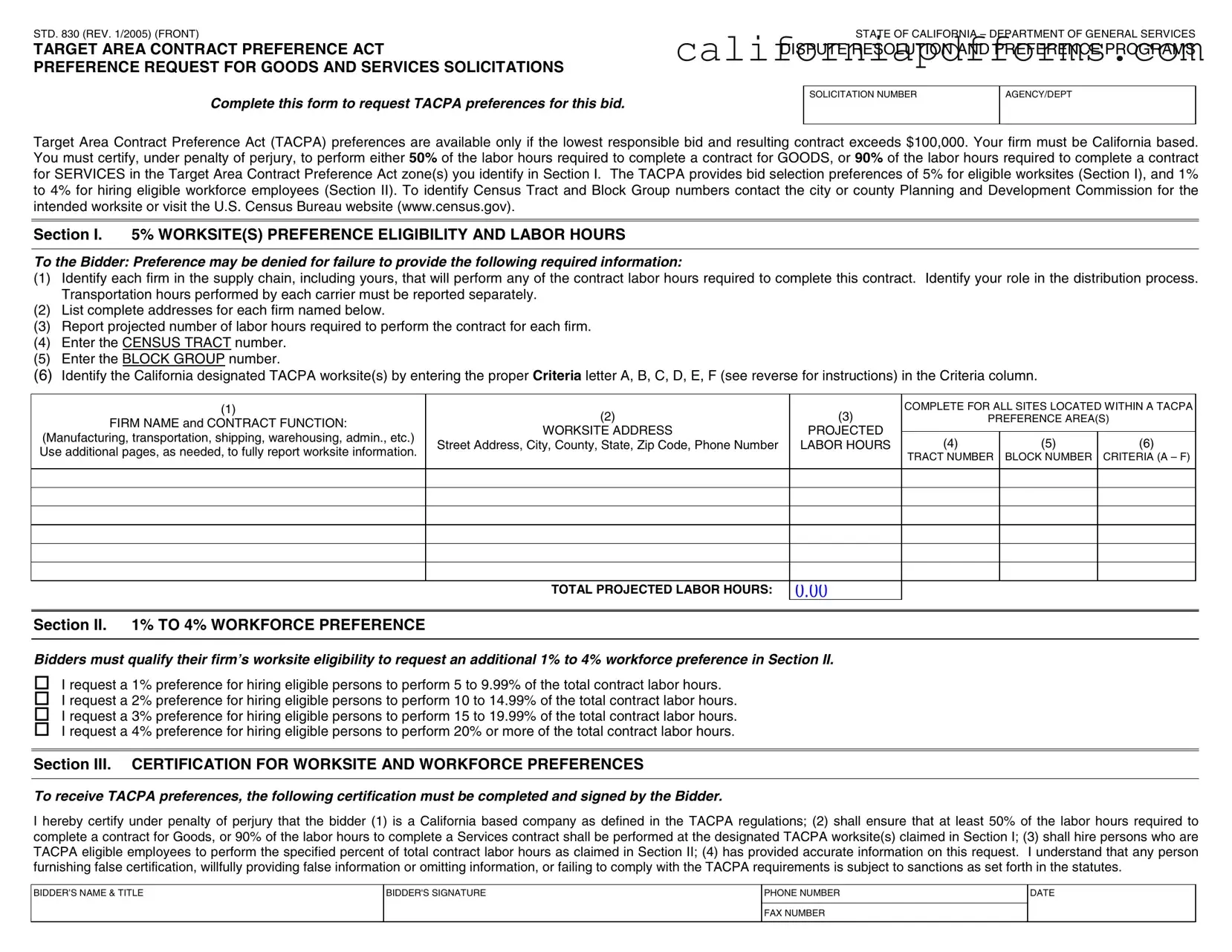Download California Std 830 Form
The California Std 830 form is a document used to request preferences under the Target Area Contract Preference Act (TACPA) for goods and services solicitations. This form is essential for California-based firms looking to gain bidding advantages when their contracts exceed $100,000. By filling out this form, businesses can potentially receive a 5% worksite preference and an additional 1% to 4% workforce preference, enhancing their competitiveness in state contracts.
Ready to take advantage of these preferences? Fill out the California Std 830 form by clicking the button below.
Open Your Form Online
